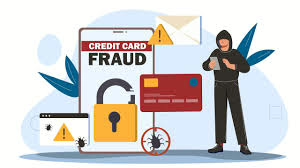In the world of finance, a shadowy adversary lurks, known as bank fraud. This nefarious act poses a significant threat, capable of inflicting substantial financial harm not just on individuals but also on businesses and financial institutions alike. Bank fraud manifests in various guises, from the seemingly innocuous act of check forgery to more intricate schemes involving identity theft and money laundering. The spectrum of bank fraud is vast, encompassing counterfeiting, check scams, identity theft, loan frauds, credit card scams, and ever-deceptive phishing attacks.

The scale of these fraudulent activities can vary dramatically, ranging from small-time cons to elaborate operations that siphon millions from unsuspecting victims. It becomes imperative for both individuals and businesses to familiarise themselves with the myriad forms of bank fraud and to remain vigilant against the diverse tactics employed by fraudsters.
To safeguard oneself from becoming a victim, one must first understand the different types of bank fraud and recognise specific examples of each. In this narrative, we will embark on a journey through the landscape of bank fraud, exploring its many forms, illustrating examples, and uncovering strategies to defend against its pervasive threat.
At its core, bank fraud represents a serious violation of trust. In this financial crime, an individual or group exploits a financial institution or its services for personal enrichment or to further other illicit endeavours. The methods employed by these criminals are as varied as they are cunning; they may create fictitious accounts, assume false identities, or manipulate account records to their advantage. Stolen credit cards or ATM cards might be wielded like weapons, granting unauthorised access to the treasure troves of financial institutions.
The ramifications of bank fraud are severe, with potential consequences including hefty fines, imprisonment, and even the revocation of business licenses. For financial institutions, this issue is particularly pressing. They face not only the threat of losing customer funds but also the risk of having sensitive information compromised. Thus, it falls upon these institutions to fortify their defences against such criminal acts. They must employ robust security measures—like advanced encryption techniques, two-factor authentication for identity verification, and comprehensive fraud detection and prevention protocols—to protect their assets and their customers.
As we delve deeper into this critical subject, we aim to illuminate the complexities of bank fraud and equip you with the knowledge needed to navigate this perilous terrain safely. Understanding the nature of these fraudulent acts is not merely an academic exercise; it is a vital step toward arming oneself against the potential dangers that lie in wait in the world of finance. Together, let us uncover the truth about bank fraud and learn how to shield ourselves from its insidious grip.
In the ever-evolving landscape of banking, institutions face a growing threat: fraud. To shield themselves from this insidious challenge, banks must adopt robust internal controls and sophisticated monitoring systems. Meanwhile, customers should also educate themselves about the lurking dangers of financial fraud and actively safeguard their sensitive information. Staying informed about the latest trends in banking fraud can provide a significant advantage against those who seek to deceive.
The motivations behind bank fraud are as varied as the methods employed by those who perpetrate it. For some fraudsters, the allure lies in the prospect of a quick financial gain, exploiting the unfortunate circumstances of others without a second thought. Others, however, harbour darker intentions, aiming to manipulate the financial system for their benefit, often with elaborate schemes that can be difficult to trace.
Consider a scenario where a fraudster gains access to an unsuspecting victim’s bank account. With this illicit access, they might initiate unauthorised transfers to their accounts or use the funds to purchase items they never intended to pay for. Such fraudulent activities can be particularly elusive; skilled criminals often orchestrate these transactions through a web of multiple accounts, making detection all the more challenging.

Another common ruse involves fabricating information to secure a bank loan. A fraudster might alter their credit history or exaggerate their income to create a false persona that convinces lenders to approve their application. This deceit not only robs the bank but also creates a ripple effect that can further complicate the financial landscape.
Identity theft is yet another perilous tactic employed by fraudsters. They may leverage access to a bank account to steal an individual’s personal details. This stolen information can then be used to make unauthorised purchases or even to open new accounts under the victim’s name. The repercussions of such actions can be devastating, leaving victims vulnerable to ongoing financial abuse and opening the door to various forms of fraud, including account takeovers.
Bank fraud is not just a petty crime; it is a serious offence that warrants accountability for those who engage in it. Vigilance is crucial as individuals navigate their financial journeys. Ensuring the security of one’s financial information is paramount, and reporting any suspicious behaviour to the authorities promptly can make all the difference. By adopting these protective measures, individuals can fortify themselves against becoming unwitting victims of bank fraud and contribute to a safer banking environment for everyone.
Exploring the Various Facets of Bank Fraud
Bank fraud is a grave offence that imposes substantial financial burdens on both financial institutions and their clientele. The manifestations of this crime are diverse, ranging from minor cons to extensive schemes that can involve staggering sums of money. Here, we delve into some of the most prevalent forms of bank fraud that individuals and organisations may encounter.
The Deceptive Art of Accounting Fraud
Imagine a bustling bank, its reputation built on trust and reliability. However, lurking beneath the surface may be the sinister practice of accounting fraud. This occurs when a bank chooses to distort its financial reality, either by hiding crucial details or outright misrepresenting them. Picture a scenario where the financial statements are manipulated, presenting an illusion of robust profitability while concealing troubling truths. This deceit can take many forms, including the misappropriation of funds meant for the bank’s operational needs. The consequences can be dire, leading to significant losses and erosion of trust.
The Pitfalls of Bill Discounting Fraud
In another corner of the financial world lies bill discounting fraud, a practice that can ensnare even well-established banks. Here, a bank unwittingly accepts bills that lack sufficient collateral to support them. This gamble can prove disastrous if the issuer fails to honour their obligation. The bank, relying on these bills, risks facing severe financial repercussions. Moreover, engaging in the sale of these discounted bills can further compound their losses, creating a ripple effect that threatens the institution’s stability.
The Intricacies of Cheque Kiting
Now, let’s step into the realm of cheque kiting—a cunning tactic that exploits the delay between writing a cheque and its eventual clearance. Picture a clever criminal who writes a cheque for a sum they know isn’t available in their account. They then deposit it into another account, confident in their ability to withdraw funds before the cheque bounces. This intricate dance with deception not only showcases the audacity of the perpetrator but also highlights the vulnerability of banking systems to such fraudulent schemes. Often intertwined with this practice are forged documents that further complicate the web of deceit.
The Threat of Forged or Fraudulent Documents
At the heart of many fraudulent activities lie forged or altered documents—tools wielded by criminals seeking to exploit unsuspecting victims. Imagine an individual using a counterfeit document to open a bank account under another person’s name, depositing a cheque that is destined to fail. This form of deceit falls within the broader category of cheating and carries severe legal consequences. Such actions not only undermine the integrity of banking systems but also pose significant risks to innocent individuals caught in the crossfire.
In conclusion, bank fraud encompasses a range of deceptive practices that can have devastating effects on financial institutions and their customers alike. As we navigate through these various types, it becomes increasingly clear that vigilance and awareness are essential in combating these insidious threats that lurk in the shadows of our financial landscapes.
In the shadowy corners of financial deceit, two particularly nefarious crimes lurk: forgery and the manipulation of cheques. These acts, along with the submission of fraudulent loan applications, represent significant violations of the law that can lead to severe consequences for those who engage in them. The act of making even the slightest alteration to a cheque or document with the intention to deceive is a grave offence, one that invites legal repercussions.
Cheques that have been tampered with are frequently exploited in schemes of fraud due to their inherent vulnerability; they can be easily modified yet often go unnoticed by unsuspecting victims. For example, an individual might change digits, alter the name of the payee, or adjust both the date and the amount written on the cheque. Such alterations enable fraudsters to gain access to funds or goods wrongfully they are not entitled to while also opening the door to identity theft.

Another insidious form of deception lies in fraudulent loan applications. This crime involves the submission of misleading or incomplete information to secure loans for which the applicant does not qualify. Often, this includes fabricating documents or providing false details regarding income, assets, or other vital financial data, all in pursuit of ill-gotten gains.
A new avenue of concern has emerged in the realm of financial fraud: empty ATM envelope deposits. This method involves criminals slipping empty envelopes into ATMs to create fictitious deposits, thereby laundering money. This tactic exploits a loophole in banking practices, as many financial institutions do not rigorously verify the contents of deposited envelopes, allowing illicit activities to flourish under their watch.
Then there’s the alarming rise of identity theft and impersonation—a crime that has escalated dramatically in our digital age. This sinister act involves an individual unlawfully acquiring someone else’s details—such as their name, address, bank account number, Social Security Number (in the USA), National Insurance Number (in the UK), driver’s license number, or credit card information—and using that stolen information to commit fraud or other unlawful acts.
Identity theft occurs through varied and often ingenious methods. A thief may gain access to sensitive data by hacking into a victim’s computer system or through more traditional means, like stealing a wallet. In either case, the impact on victims can be profound and life-altering, leaving them to navigate the murky waters of restoring their identities while grappling with the fallout of such violations.
As these forms of fraud continue to evolve and proliferate, it becomes increasingly essential for individuals and institutions alike to remain vigilant and proactive in safeguarding against such threats.
The Deceptive World of Financial Fraud
In the shadowy corners of the financial landscape, a sinister game unfolds, where trust is exploited and dreams are shattered. Among the many schemes that lurk, one particularly nefarious tactic stands out: prime bank fraud. This insidious scam revolves around the creation of fictitious “prime banks.” Imagine a group of cunning con artists weaving an intricate web of deceit, enticing unsuspecting investors to put their money into non-existent financial products. With a mix of charisma and cunning, these fraudsters present an alluring façade backed by counterfeit documents—fraudulent bank statements, forged signature cards, and even misleading testimonials—all meticulously crafted to convince victims that they are participating in a legitimate financial endeavour. They dangle the promise of substantial returns, insisting that a fortune can be made in no time at all, luring hopeful investors deeper into their trap.

But the world of financial deception doesn’t stop there. Enter the rogue traders—individuals oorganisationsns who thrive on chaos and manipulation. These players operate on the fringes of legality, engaging in securities fraud and other illicit activities purely for profit. They deploy underhanded tactics to distort market dynamics, preying on the naivety of unwitting investors. Sometimes, they don the guise of brokers or investment advisers, offering misleading information to their clients solely to reap commissions or fees. In this high-stakes game, integrity is sacrificed at the altar of greed.
As we navigate further into this murky realm, we encounter another form of treachery: stolen cheque fraud. Picture this: a thief stealthily acquiring someone else’s cheque, using it as a ticket to financial gain. The fraudster either cashes it or deposits it into their account, all while the rightful owner remains blissfully unaware. The methods employed are alarmingly simple yet effective—stealing cheques from mailboxes, pilfering chequebooks from homes, or preying on vulnerable seniors who may not be as vigilant about their financial security.
Then there’s wire transfer fraud, a modern-day heist that exploits technology for malicious intent. In this scenario, a criminal uses stolen personal information to infiltrate a bank account, initiating unauthorised wire transfers that siphon funds into accounts controlled by themselves or their accomplices. It’s a digital age crime that underscores how easily trust can be violated in our interconnected world.
Yet, these are merely snapshots of a broader spectrum of bank fraud. The landscape is dotted with various other schemes: credit card fraud, which thrives on identity theft; check kiti, which manipulates the timing of deposits and withdrawals; account takes over, where fraudsters assume control over someone else’s banking information; and counterfeit, which involves creating fake instruments to deceive financial institutions.
So, what exactly constitutes fraud in banking? At its core, it is a form of financial crime marked by deceptive practices aimed at achieving an unfair or illegal financial advantage. In this intricate dance of deception and betrayal, the stakes are high, and the consequences are severe. It serves as a stark reminder that in the world of finance, vigilance is essential, for behind every enticing offer lies the potential for peril.
Who Bears the Burden of Bank Fraud?
In the intricate world of finance, bank fraud stands as a grave issue that weighs heavily on the minds of both financial institutions and their patrons. This illicit activity not only inflicts significant financial harm on banks and their clients but also extends its reach to various stakeholders intertwined with the banking ecosystem. When it comes to accountability for such deceitful acts, the responsibility is shared between the banks and their customers.
Financial institutions must take the lead in safeguarding their clients’ sensitive information and monetary assets. They are tasked with implementing robust security measures and protocols designed to shield customers from fraud and theft. Equally important is ensuring that employees are thoroughly trained to recognise the signs of potential fraud and to act swiftly to mitigate risks.

Conversely, customers must also play their part in fortifying their accounts against fraudulent activities. They must create strong, secure passwords that are not easily decipherable. Furthermore, customers should remain vigilant, keeping an eye out for any irregularities in their accounts, such as unauthorised transactions, and promptly report any suspicious occurrences to their banks. Caution is paramount; accessing banking services over unsecured Wi-Fi networks can invite unwelcome threats, and being educated about common scams can empower customers to protect themselves more effectively.
Ultimately, both banks and their clients share the responsibility of defending against bank fraud. Through diligent vigilance and proactive measures, they can collectively diminish the risk of falling victim to such financial crimes.
Uncovering the Signs of Bank Fraud
Detecting bank fraud is a critical endeavour in safeguarding one’s financial well-being. The journey begins with a keen sense of awareness and a watchful eye for any signs that might indicate foul play. One of the foundational steps in this process involves meticulously reviewing bank statements and credit reports. By doing so, individuals can identify any peculiar activities, such as unexpected withdrawals or unfamiliar purchases, that could signal fraudulent behaviour.
In this digital age, where communication flows seamlessly through emails and text messages, it’s essential to exercise caution. Messages that appear to be from your bank could potentially be part of a cunning phishing scheme designed to extract personal information. Therefore, one should remain sceptical of unsolicited calls or messages requesting sensitive details like credit card numbers or personal identification.
Another effective strategy for detecting bank fraud is to establish transaction alerts. These notifications serve as an early warning system, instantly informing you whenever a transaction occurs on your account. Such proactive measures can significantly enhance your ability to spot unauthorised activities before they escalate into more significant issues.

By carefully monitoring financial statements, being sceptical of unsolicited communications, and setting up transaction alerts, individuals can build a formidable defence against the threat of bank fraud. Remaining alert and informed will ultimately empower you to protect your finances from those who seek to undermine them.
In the intricate world of banking, where trust and security are paramount, institutions must be vigilant to safeguard their operations against the ever-present threat of fraud. To this end, banks can adopt a range of strategies designed to unveil fraudulent activities that might otherwise slip through the cracks.
One practical approach is to delve into the nuances of customer behaviour and transaction trends. By meticulously examining these patterns, banks can identify anomalies that raise red flags. Furthermore, constant oversight of account activity allows institutions to spot suspicious transactions in real time. In an age where technology reigns supreme, leveraging biometric authentication methods has emerged as a formidable line of defence, providing an additional layer of security that is hard for fraudsters to bypass.
Automated systems explicitly designed for fraud detection can efficiently sift through vast amounts of data, identifying irregularities that warrant further investigation. Collaborating with partner companies to cross-verify information can also fortify a bank’s defences against deceitful practices. Additionally, implementing monitoring systems focused on unusual transaction patterns can help catch issues before they escalate.
As banks strive to maintain the integrity of their services, analysing customer profiles for discrepancies becomes crucial. The integration of machine learning and AI-driven detection systems enhances these efforts, enabling institutions to recognise subtle signs of fraud that human analysts might overlook. When a transaction appears suspect, requiring supplementary authentication can serve as a critical safeguard.
Data mining techniques can unearth hidden fraudulent activities while verifying customer identities, ensuring that only legitimate users have access to accounts. Adhering strictly to Know Your Customer (KYC) and Anti-Money Laundering (AML) regulations is not just a legal obligation but a fundamental practice in fostering a secure banking environment. Establishing robust authentication and verification procedures, including the use of biometric measures like fingerprint and facial recognition, rounds out a comprehensive strategy against fraud.
Yet, while banks implement these sophisticated techniques, it’s equally important for individuals to take proactive steps to protect themselves from banking fraud. This menace can leave deep financial and emotional scars on its victims.
To begin with, regularly scrutinising bank statements and account activities is essential. This vigilant practice allows customers to identify any unauthorised or suspicious transactions swiftly and promptly inform their bank of any irregularities. Moreover, crafting strong passwords for online banking platforms and other financial accounts is critical; these passwords should be complex enough to withstand attempts at guessing and should be updated frequently for added security.

When conducting transactions in person or withdrawing cash from ATMs, maintaining awareness of one’s surroundings is vital. If anything appears amiss or if you encounter dubious individuals nearby, it’s wise to vacate the vicinity without delay and notify bank personnel or law enforcement. Other preventive measures include ignoring unsolicited emails or phone calls that request personal details and ensuring purchases are made only through reputable online retailers.
If, despite all precautions, one finds themselves ensnared by fraudulent activities, it is imperative to reach out to the bank without hesitation. They often possess the means to reverse fraudulent charges and mitigate potential losses. By remaining informed and vigilant, individuals can bolster their defences against banking fraud, safeguarding both their finances and peace of mind.
In the ever-evolving landscape of finance, the spectre of banking fraud looms large, casting a shadow over both individuals and businesses alike. The consequences of such deceit can be dire, leading to significant financial losses and a breach of trust that may take years to mend. In this context, understanding the myriad forms of fraud is paramount for anyone looking to safeguard their assets. Thankfully, a beacon of hope has emerged in the form of Maxthon—a robust solution designed specifically to combat this insidious threat.
Imagine a world where your banking experience is not only seamless but also fortified against the lurking dangers of fraud. Maxthon stands at the forefront of this endeavour, employing cutting-edge Artificial Intelligence (AI) to scrutinise vast amounts of data in real-time. By identifying anomalies and irregular patterns, Maxthon acts as an early alert system, notifying you of any suspicious activities that might otherwise go unnoticed until it’s too late.
In our digital era, where banking fraud is becoming increasingly sophisticated and widespread, financial institutions must arm themselves with advanced tools capable of countering these threats. Maxthon rises to the occasion as a comprehensive solution that empowers banks not only to detect but also preemptively prevent fraudulent actions. Utilising state-of-the-art AI technology, it delves deep into customer behaviours, tirelessly monitoring transactions and flagging any actions that deviate from the norm.
Consider the transformative impact of such technology: banks can now swiftly pinpoint and investigate potential fraud cases, mitigating risks before they escalate into financial catastrophes. The ability to monitor customer accounts in real time provides an additional layer of security, ensuring that any irregularities are addressed promptly.

However, the advantages of Maxthon extend beyond mere detection. By harnessing the power of AI, banks can streamline their fraud investigation processes, significantly cutting down on the time and resources traditionally allocated to manual assessments. This not only translates to cost savings but also enhances operational efficiency—allowing financial institutions to redirect their focus toward fostering customer relationships rather than being bogged down by the aftermath of fraud.
Moreover, Maxthon employs predictive analytics, a powerful tool that anticipates potential fraud before it even occurs. This proactive approach helps minimise financial losses and reinforces the safety net protecting customer funds, creating a more secure banking environment for all.
Security, compliance, and reliability are the cornerstones upon which Maxthon is built. With strong encryption protocols and adherence to regulatory standards, this solution ensures that both banks and their customers can operate within a framework of trust and safety. Designed with scalability in mind, Maxthon allows financial institutions to expand their fraud prevention capabilities as their needs evolve—ensuring they remain a step ahead in the battle against fraud.
At maxthon.com, we are unwavering in our dedication to providing secure banking solutions. We believe that with the right tools and technologies, banks can forge a safer future for their customers—a future where the threat of banking fraud is diminished, and peace of mind reigns supreme.
Maxthon
In the ever-evolving landscape of today’s online interactions, where the digital world seems to shift at lightning speed, protecting oneself while navigating the vast internet has become a matter of paramount importance. The selection of a web browser that places a high priority on security and privacy is now more crucial than ever before. Amidst the multitude of browsers competing for users’ attention, Maxthon Browser stands out as an exceptional option, tackling these vital issues without imposing any financial burden on its users. This advanced browser comes packed with an impressive array of built-in tools, such as an ad blocker and various anti-tracking features—key components that significantly bolster your online privacy.
Maxthon has carved out a unique niche for itself by dedicating its efforts to creating a browsing experience centred around user safety and confidentiality. With a steadfast resolve to shield personal information and online activities from the myriad threats lurking in cyberspace, Maxthon employs a variety of robust strategies aimed at protecting user data. By harnessing sophisticated encryption techniques, this browser guarantees that sensitive information remains secure and private throughout your digital journeys.
When it comes to enhancing privacy during online activities, Maxthon truly shines. Every aspect of the browser is thoughtfully crafted with a plethora of features designed specifically to elevate your privacy. From its effective ad-blocking capabilities to comprehensive anti-tracking measures and a dedicated incognito mode, these tools work in harmony to eliminate intrusive advertisements and thwart tracking scripts that could compromise your online experience. As a result, users can traverse the internet with a heightened sense of security. The incognito mode further enhances this sense of safety, enabling users to explore the web freely without leaving behind any digital footprints or traces on their devices.

Maxthon’s unwavering dedication to user privacy reflects its commitment to creating a safer online environment. When the complexities of the internet can feel overwhelming, choosing a browser like Maxthon can empower users to reclaim control over their digital lives, ensuring that their journeys through cyberspace are as secure and private as possible.

